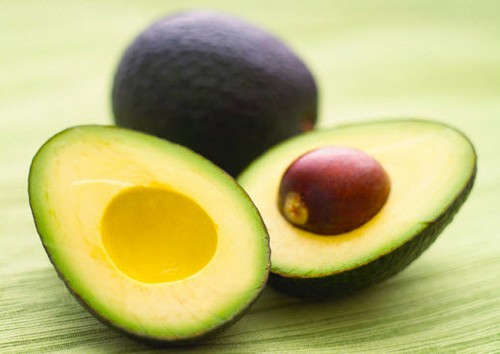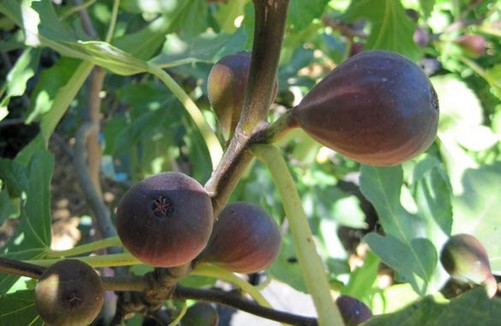God’s Pharmacy: Interesting Facts About 12 Fruits, Nuts and Vegetables
Did you know that there are over 40,000 different varieties of rice in the world? And did you know that avocados are actually fruits not vegetables? Most people don’t know that the same goes for pumpkins. Were you aware that peanuts are not nuts, but are part of the pea family? That’s why they are typically roasted because they are prone to spoiling much faster than nuts.
Knowing these interesting facts about fruits, nuts and veggies will do more than give you an upper hand in trivial pursuit or Jeopardy. You will have a greater appreciation for the wonderful world of food that our Creator has blessed us with. You may even find yourself hooked – trying to discover new and exciting idiosyncrasies about the fruit and vegetables you eat every day. Go with it, it’s a fascinating world of useful information to be gained!
God’s Pharmacy
Any online search on the interesting facts about fruits, nuts and vegetables is incomplete unless you watch God’s Pharmacy by Dr. Christopher’s Herbal Legacy. In this very creative presentation, we discover how many foods resemble parts of the body that they benefit. You may not believe it at first, but all these fascinating facts about food are true:
-
Avocados

Avocados resemble the womb and cervix. The 14,000 + photolytic chemical components of nutrition in each have been shown to balance female sex hormones, shed unwanted birth weight, and prevent cervical cancer. Hass avocados also take about nine months to grow after flowering, just like a baby in the womb takes about nine months to mature before birth. How wild is that!
-
Carrots

Carrots (sliced crosswise) look like human eye. Time and time again, the Vitamin A in carrots has been linked to strong eyesight.
-
Celery

Celery resembles human bones. High in calcium, magnesium and Vitamin K, they are vital for healthy bone strength.
-
Citrus Fruits

Citrus fruits resemble female mammary glands and assist in the movement of lymph in and out of the breasts. These fruits also contain limonoids that are helpful in the fighting breast cancer.
-
Figs

Figs look like the testes and hang in two when they grow. They are filled with countless seeds (resembling sperm) that improve male fertility increasing sperm production.
-
Grapes

Grapes hanging in a cluster resemble the shape of the heart and each individual grape remind us of a heart cell. Found in the skin of red grapes, resveratrol helps reduce inflammation and makes it more difficult for platelets to stick together and form the clots thus preventing heart attack.
-
Kidney Beans

Kidney beans have an identical shape to the human kidney and actually help to heal and maintain kidney function. They are great sources for magnesium and potassium and are useful in preventing kidney stone formation.
-
Olives

Olives are the shape of ovaries and may help reduce hot flashes in women going through menopause. Not surprisingly, research has linked olive oil consumption, which are high in Omega-3 and Omega-6 fatty acids, to reduced ovarian cancer.
-
Onions

Onions look like the body’s cells. Being high in sulfur there is evidence showing that onions can lower blood levels of cholesterol and triglycerides, and also improve cell membrane function in red blood cells.
-
Sweet Potatoes

Sweet potatoes look like the pancreas, the organ that produces insulin and if not properly functioning can cause Type I Diabetes. Known for its powerful anti-inflammatory properties, sweet potatoes are praised for being low on the glycemic index – despite their sweet taste – and are fantastic in fighting diabetes.
-
Tomatoes

Tomatoes have four chambers and are red like the heart. Research has shown that the lycopene in tomatoes are vital for proper blood flow and can thus lower blood pressure.
-
Walnuts
Walnuts (whole and cut in half) look like the entire brain – left and right hemispheres, upper cerebrums and lower cerebellums – even the folds on the nut resemble the neo-cortex. It is even suspected that walnuts help develop more than three-dozen neurotransmitters for proper brain function. Research suggests that walnuts may reduce the risk or delay the onset of Alzheimer’s disease. The high concentration of omega-3 fats in walnuts promotes healthy brain function.
The scientific data supporting these claims is plenteous and has been confirmed by countless testimonies of vegetarians who live off of “God’s Pharmacy.” Try implementing these foods into your daily lifestyle and watch what happens to your health. You will not be disappointed!
Resources
https://www.ncbi.nlm.nih.gov/pubmed/23593085
https://www.infonet-biovision.org/default/ct/205/crops
https://www.whfoods.com/genpage.php?tname=foodspice&dbid=14
https://www.webmd.com/heart-disease/resveratrol-supplements
https://www.whfoods.com/genpage.php?tname=foodspice&dbid=45
https://www.ncbi.nlm.nih.gov/pubmed/12146851
https://www.cals.ncsu.edu/agcomm/magazine/winter07/diabetes.html

